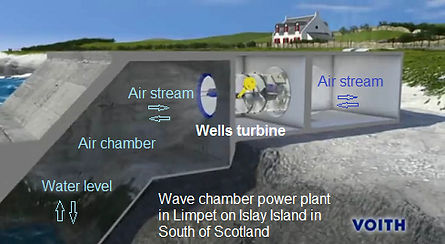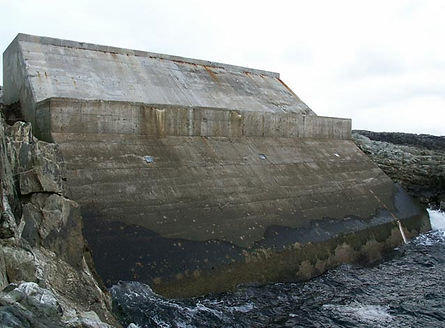Ben Stonehouse
WAVE ENERGY
Advantages
-
Capable of high efficiency (60-80%) in ideal conditions.
-
Renewable energy source obtained by wind via the Sun’s heating of our atmosphere.
-
Minimal environmental impact when properly placed.
-
Low operation and maintenance costs after construction.
-
Low upfront construction costs.
-
No emissions during operation.
Disadvantages
-
Improperly placed wave power plants can damage the marine ecosystem.
-
Efficiency drops significantly in rough weather due to safety mechanisms.
-
Limited locations where waves are strong enough to produce electricity without damaging equipment.
-
Power only produced near oceans making transmission to inland customers difficult.
-
Winds (and thus waves) can be unpredictable and far from reliable. Can’t produce electricity at all times
Case study- Islay, Scotland

The Limpet device began in 2004 and was the only fully operatiojal wave power project in the UK
To install limpet, a gully was excavated into the shore line and a concrete chamber was constructed to capture onshore waves.
Air trapped in this chamber by the waves is forced through a pair of turbines, each of which is connnected to a 250 kW generator.
In september 2007 scottish power was granted planning permission to build the world's largest generating capacity commerical wave farm off the Orkney islands. this will be the first wave farm in the UK. It will cost £10 million.


Consists of four floating 160 m long pelamis devices, otherwise known as 'sea snakes'.
These will provide 3MW of renewable electricity, enough to power 3,000 homes